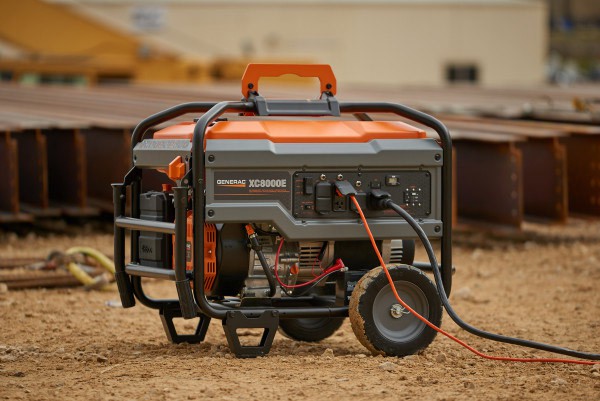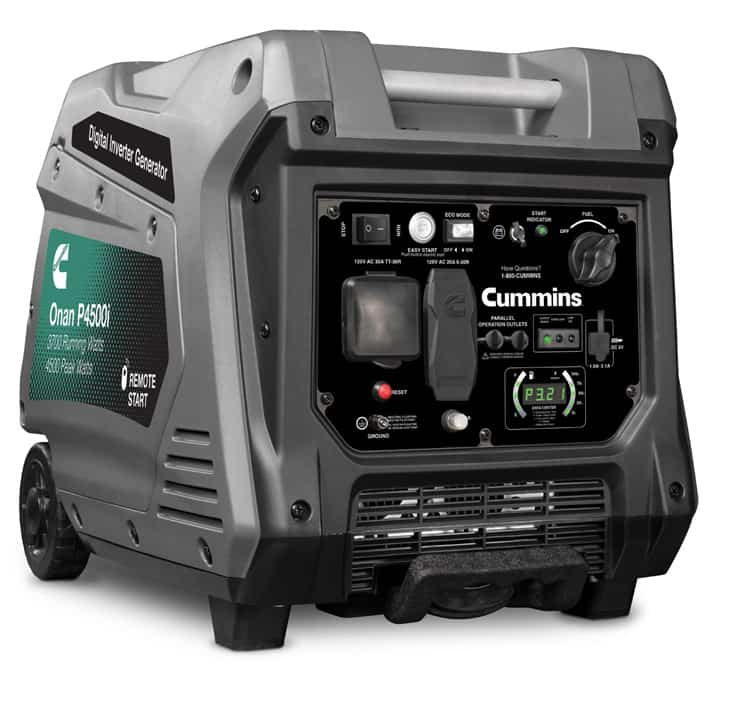Portable Generator Buyer Guide: What Size Generator do I need?
 Portable Generators for Every Need
Portable Generators for Every Need
How to Choose the Best Portable Generator
Portable means take it with you. Whether it’s camping, the town picnic, or a construction site, the right size generator provides the power you need wherever you need it.
There are more than a few factors to consider when choosing a generator. On a job site, the noise level is less of a concern than at a national park campground where levels are regulated and strictly enforced. It doesn’t help that some manufacturers don’t list noise levels of their portable generators. If you're a contractor, a generator with a heavy-duty frame , lift hook, and plenty of outlets is more important than how much noise it makes. Around the home or campsite, noise, weight, portability, and fuel economy outweigh numerous outlets and lifting hooks.
Portable generators make a popular option for emergency use and around the home. At the back of a large lot, the portable offers a safer, more reliable option than numerous extension cords connected together to bring power where you need it. Where outages are rare and short-lived, portable generators can supply power to a few appliances until the power company restores service. Standby generators are preferable for this purpose, but portable generators work in an emergency. If you do plan to use a portable for emergency power, install a manual transfer switch for the generator to make a safe and reliable connection to your home's electrical system. A manual transfer switch makes emergency power easier and eliminates extension cords.
How to Use a Portable Generator for Emergency Power
Sizing a Portable Generator: How much Power do I Need?
 The basics are simple. What will you plug into the portable generator and how much power does it require? A tag on most appliances, power tools, and electric motors in general will give you the information you need. If it’s not on the appliance itself, it might be in the documentation.
The basics are simple. What will you plug into the portable generator and how much power does it require? A tag on most appliances, power tools, and electric motors in general will give you the information you need. If it’s not on the appliance itself, it might be in the documentation.
Look for "WATTS" on the tag or in the owner’s manual. If it is not given, just multiply the voltage by the amperes. For example: 115 volts x 5 amperes = 575 watts. If the motor is bigger than a window fan, double or triple the running watts to determine starting watts.
What Will My Portable Generator Run?
Starting watts are how much power the motor needs to start and come up to full speed and are only required for a few seconds. Generators have a surge rating for just this purpose.
Add up the continuous watts of everything that will run at once, then add in the highest starting watts for the minimum size generator required. Operating a generator, or any engine-driven machine at full load for extended periods reduces it's useful life. Add a margin of 15 to 20 percent for the load you expect the generator to handle.
Total Running Watts = (Running Watts x Margin) + Running Watts
Generator Max Watts = Total Running Watts + Highest Starting Watts
Example: A homeowner wants to buy a portable generator to run the refrigerator, sump pump, 100 watts of lighting, and a 1000 watt microwave oven during a power outage.
| Appliance | Watts | Starting Watts |
| Refrigerator | 900 Watts | 2100 |
| Lighting | 100 Watts | |
| Sump Pump | 500 Watts | 1700 Watts |
| Microwave | 1000 Watts | |
| Total | 2500 Watts | 2100 Watts (Highest) |
2500 Watts + 20% = 3000 Running Watts.
2500 Watts + 15% = 2875 Running Watts.
So we need a generator with 2875 to 3000 running watts and an additional 2100 starting watts.
Looking through the catalog, a popular inverter generator has a 3700 Running Watts and 4500 Starting Watts rating. Will this work? Our base load is 2500 Watts, so that fits with plenty of margin. However, we need 2100 Starting watts. 2500 + 2100 = 4600 Starting Watts. However, it is just below the required minimum starting watts. Another inverter has 4650 Starting Watts and 3650 Running Watts. Perfect. It covers our starting watts and our running watts, plus a good running watt margin to add a few lights or the television. The Inverter Generator will be quieter than most, use less fuel and use it more efficiently than a regular portable. With the right generator extension cords, the homeowner can park it away from the house and get the power they need without worrying about carbon monoxide and noise issues.
Note: Not all loads require starting watts. For example, a light bulb uses the listed watts from the moment the switch turns on until it turns off.
 The intended use is also important. Portable means you can move, but it doesn't say anything about how easy or how much fuel it will use. Larger capacity generators typically use more fuel because they have larger engines. They use less fuel at no load than at half load or full load. Some have idle controllers that slow the engine under no-load conditions. The best contractor generators usually have long run times between refueling and a variety of outlets to supply multiple tools and tradesmen at the same time.
The intended use is also important. Portable means you can move, but it doesn't say anything about how easy or how much fuel it will use. Larger capacity generators typically use more fuel because they have larger engines. They use less fuel at no load than at half load or full load. Some have idle controllers that slow the engine under no-load conditions. The best contractor generators usually have long run times between refueling and a variety of outlets to supply multiple tools and tradesmen at the same time.
Portable generators for RVing and Camping have different requirements. RV owners want the generator to run their air conditioners, lights, and refrigerator. Quiet operation is important, but so is a long run time. Without a dedicated RV Generator, Portable Inverter Generators can supply plenty of power for camping and RVing without making a lot of noise. They do it while using a minimal amount of fuel.
Updated March 2022
